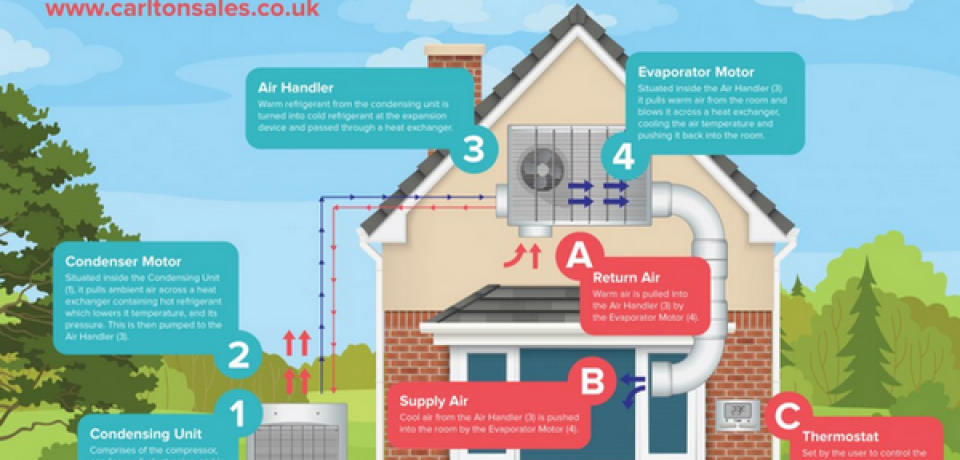The Future Of Home Heating - Just How Heatpump Modern Technology Is Progressing
The Future Of Home Heating - Just How Heatpump Modern Technology Is Progressing
Blog Article
Material By-Baker Byrne
Heatpump will be a vital innovation for decarbonising heating. In a circumstance constant with federal governments' announced power and climate dedications, their international capacity doubles by 2030, while their share in heating rises to one-quarter.
They work best in well-insulated homes and rely on power, which can be provided from a sustainable power grid. Technical innovations are making them extra reliable, smarter and cheaper.
Fuel Cells
Heat pumps make use of a compressor, refrigerant, coils and fans to move the air and warmth in homes and appliances. They can be powered by solar power or electrical power from the grid. They have actually been acquiring appeal because of their affordable, quiet procedure and the ability to produce electrical energy during peak power need.
Some business, like IdaTech and BG MicroGen, are working on gas cells for home heating. These microgenerators can replace a gas boiler and create a few of a residence's electrical requirements with a link to the electricity grid for the remainder.
Yet there are reasons to be skeptical of using hydrogen for home heating, Rosenow says. It would certainly be expensive and ineffective contrasted to other modern technologies, and it would contribute to carbon exhausts.
Smart and Connected Technologies
Smart home modern technology enables property owners to link and manage their tools remotely with making use of mobile phone applications. For example, wise thermostats can learn your heating choices and immediately adjust to enhance energy intake. Smart illumination systems can be controlled with voice commands and automatically turn off lights when you leave the area, lowering energy waste. And smart plugs can check and handle your electrical use, permitting you to recognize and restrict energy-hungry devices.
The tech-savvy household shown in Carina's meeting is a good image of how occupants reconfigure room heating practices in the light of brand-new wise home technologies. They depend on the gadgets' computerized features to perform everyday changes and concern them as a convenient ways of conducting their heating techniques. Because of https://blueandgreentomorrow.com/environment/important-tips-to-help-make-your-facility-green/ , they see no reason to adjust their practices better in order to allow versatility in their home energy demand, and treatments focusing on doing so may deal with resistance from these families.
Electrical power
Because heating up homes accounts for 13% people emissions, a button to cleaner alternatives can make a big difference. However the modern technology encounters obstacles: It's expensive and needs considerable home renovations. And it's not always suitable with renewable energy sources, such as solar and wind.
Till lately, electric heatpump were too costly to take on gas designs in a lot of markets. Yet new developments in style and products are making them extra economical. And much better cool environment performance is allowing them to operate well even in subzero temperatures.
The following action in decarbonising heating might be using heat networks, which draw warmth from a central source, such as a close-by river or sea inlet, and distribute it to a network of homes or buildings. That would certainly decrease carbon exhausts and allow houses to make the most of renewable energy, such as environment-friendly power from a grid provided by renewables. This option would certainly be less expensive than switching to hydrogen, a fossil fuel that requires new infrastructure and would only reduce carbon dioxide emissions by 5 percent if paired with boosted home insulation.
Renewable resource
As power rates drop, we're starting to see the exact same pattern in home heating that has driven electric cars and trucks right into the mainstream-- however at an also faster speed. The strong environment situation for impressive homes has been pressed better by new research study.
Renewables make up a considerable share of contemporary warmth intake, but have actually been provided limited policy attention around the world contrasted to other end-use fields-- and also less interest than electrical power has. In part, this shows a mix of consumer inertia, split motivations and, in many nations, aids for nonrenewable fuel sources.
New innovations could make the shift simpler. As an example, heatpump can be made more power effective by changing old R-22 cooling agents with new ones that do not have the high GWPs of their precursors. Some specialists likewise imagine area systems that draw heat from a nearby river or sea inlet, like a Norwegian arm. The cozy water can then be made use of for heating & cooling in a community.